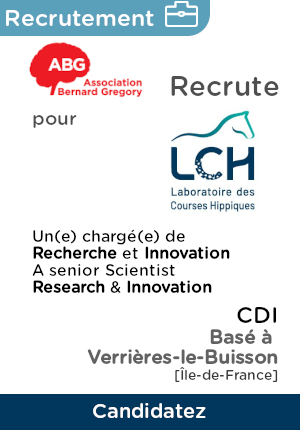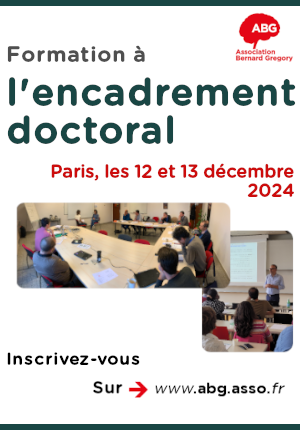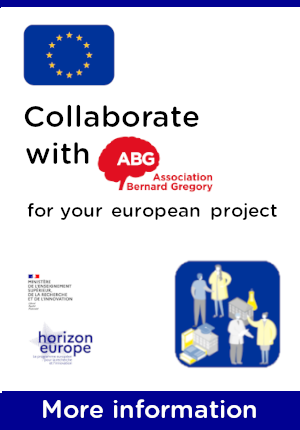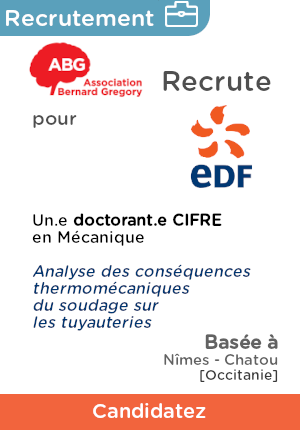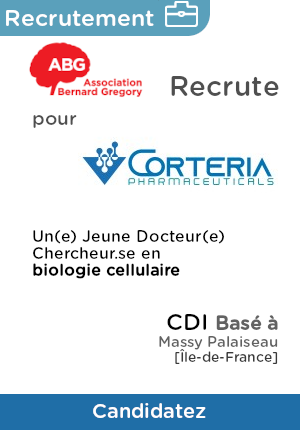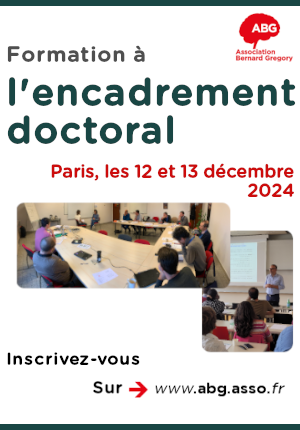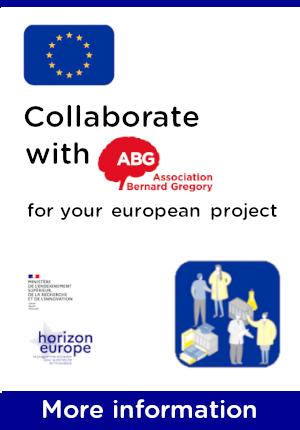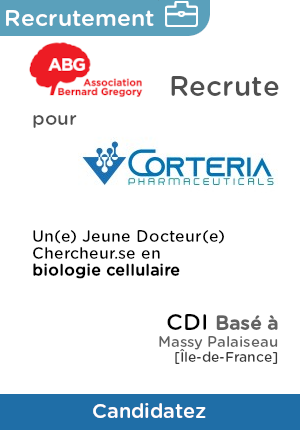Fatigue behaviour of NiTi architectured materials obtained by additive manufacturing
| ABG-125193 | Thesis topic | |
| 2024-07-19 | EU funding |
- Materials science
- Engineering sciences
Topic description
You are eligible if you have not been living in France for more than 12 months (in total) between August 2021 and August 2024.
The superelastic or shape-memory effects of NiTi alloys make them excellent candidates for applications in the transport, space and medical sectors. Superelasticity (SE) allows the alloy to deform reversibly over very large deformation ranges. The shape memory effect (SMA) is the ability of a part to change shape by heating, even after significant deformation, for example actuators that allow the solar panels on satellites to be deployed simply by heating a shape memory part. Applications cover a wide range of fields, from medical applications (stents, endodontic files, flexible glasses) to smart wheels for cars and even in the space industry for the superelastic wheels on the Mars rover. What remains limiting is the difficulty of shaping and machining NiTi alloys, which means that complex shapes are difficult to obtain (production limited to wires and plates).
Additive manufacturing makes it possible to manufacture complex parts such as architected structures, producing superelastic or shape memory metamaterials that combine the properties of the material and those of the structures. These structures could find applications in the field of advanced mobility, to absorb shocks or vibrations, or to create deployable structures or customised medical implants.
A methodology will be developed to (1) understand the link between the microstructures and the manufacturing parameters, using different microstructure characterisation techniques such as transmission electron microscopy (TEM), scanning electron microscopy (SEM) and electron backscatter diffraction (EBSD), (2) understand the effect of thin walled specimens on the microstructure, (3) understand the quasi-static behaviour of bulk and thin walled specimens in link with the microstructure, (4) to address the cyclic loading response of selected NiTi grades obtained by different process parameters.
This project is being carried out jointly by an Australian laboratory, Swinburne University, two French laboratories, I2M and PIMM, and in collaboration with French and Australian industries.
Starting date
Funding category
Funding further details
Presentation of host institution and host laboratory
The project will mainly take place at the I2M near Bordeaux. The team you will be working in is working on the durability of materials and structures. You will be involved in additive manufacturing, materials characterisation using microscopy (optical or electronic) and mechanical testing (tensile, fatigue, etc.). You will be working with another laboratory in Paris, the PIMM, to characterise materials by X-ray diffraction and to set up numerical models.
A year's work will take place in Melbourne, Australia, at Swinburne University, to continue the microstructural and mechanical characterisations.
PhD title
Country where you obtained your PhD
Institution awarding doctoral degree
Graduate school
Double degree
YesCountry where the PhD was obtained in cotutelle
Establishment awarding the doctorate in cotutelle
Candidate's profile
You are eligible if you have not been living in France for more than 12 months (in total) between August 2021 and August 2024.
Applicants must have a background in mechanics and materials and experience of internships or research projects in at least one of the areas listed below:
metal additive manufacturing, superelastic alloys, fatigue studies of metal alloys, titanium alloys, X-ray diffraction, microstructure of metal alloys.
Successful candidates for this position will be enrolled by the following institutions and must comply with their
specific entry requirements, in addition to AUFRANDE’s conditions.
Applicants must hold a Master’s degree in a relevant discipline. The Master’s degree must include a significant
research component, leading to an Honours degree class 1 (average grade between 80-100) or class 2A
(average grade between 70-79) level.
Applicants must also provide evidence of one of the following English language requirements:
• minimum IELTS overall band of 6.5 (Academic Module) with no individual band below 6.0 or a TOEFL
iBT (internet-based) minimum score of 79 (with a reading band no less than 18 and writing band no
less than 20); or Pearson (PTE) 58 (no communicative skills less than 50) no longer than 24 months before
submitting the application; or
• satisfactory completion of Swinburne’s English for Academic Purposes (EAP) Advanced level certificate
at the postgraduate level (EAP 5: PG-70%); or
• successful completion of a total of 24 months (full time equivalent) of formal study where the language
of instruction and assessment was English at AQF level 7 or above (or equivalent) at an approved
university no longer than 60 months before submitting the application; or
• successful completion of a degree where the language of instruction and assessment was English at
AQF level 8 or above (or equivalent) at an approved university no more than 60 months prior to submitting
the application.
Vous avez déjà un compte ?
Nouvel utilisateur ?
Get ABG’s monthly newsletters including news, job offers, grants & fellowships and a selection of relevant events…
Discover our members
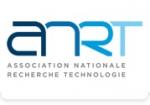 ANRT
ANRT  SUEZ
SUEZ  MabDesign
MabDesign  Généthon
Généthon  Institut de Radioprotection et de Sureté Nucléaire - IRSN - Siège
Institut de Radioprotection et de Sureté Nucléaire - IRSN - Siège  MabDesign
MabDesign  PhDOOC
PhDOOC  Groupe AFNOR - Association française de normalisation
Groupe AFNOR - Association française de normalisation  CASDEN
CASDEN  ONERA - The French Aerospace Lab
ONERA - The French Aerospace Lab  CESI
CESI  Nokia Bell Labs France
Nokia Bell Labs France  Institut Sup'biotech de Paris
Institut Sup'biotech de Paris  TotalEnergies
TotalEnergies  Aérocentre, Pôle d'excellence régional
Aérocentre, Pôle d'excellence régional  ADEME
ADEME  Laboratoire National de Métrologie et d'Essais - LNE
Laboratoire National de Métrologie et d'Essais - LNE  Tecknowmetrix
Tecknowmetrix  Ifremer
Ifremer
-
JobPermanentRef. ABG124941Corteria Pharmaceuticals- Ile-de-France - France

Jeune Docteur, Chercheur en Biologie Cellulaire & Moléculaire (H/F)
BiologyAny -
JobFixed-termRef. ABG125071KTH- Sweden
ERC-funded postdoc position on the detection of gas-phase organic radicals, KTH, Stockholm, Sweden
Chemistry - Physics - Engineering sciencesAny -
JobPermanentRef. ABG123642Laboratoire des Courses Hippiques (GIE LCH)- Ile-de-France - France

Chargé(e) de Recherche et Innovation (H/F) / Senior Scientist Research & Innovation (M/F)
Chemistry - BiochemistryConfirmed

